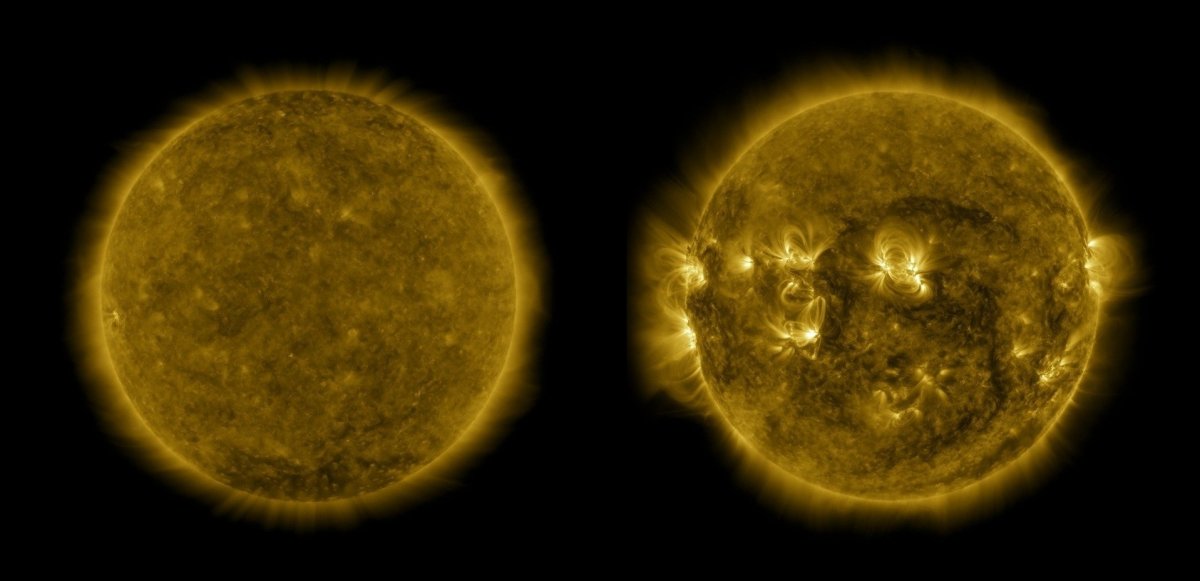Eleven year cycle confirmed: solar activity reconstructed for almost 1000 years
Source: Heise.de added 20th Jan 2021The most accurate data on solar activity so far for the past 993 not only confirm “impressively” the eleven-year activity cycle of our star, but also provide clues for two previously unknown radiation outbreaks in the High Middle Ages. This has been determined by an international team of researchers with the collaboration of the Max Planck Institute for Solar System Research (MPS). By analyzing radioactive carbon in tree rings, they were able to trace the solar activity back to the year 969. The resolution achieved is one year.
It is currently quiet That our sun goes through an eleven year cycle has been known for more than 200 years. The Swiss astronomer Rudolf Wolf discovered this in the middle of the 19. Century, whereupon he has calculated the activity back to the year 1749 – the maximum of the henceforth called 0th cycle. Currently we are counting the 25. Cycle, it should again be one of the weaker ones. The effects of more active cycles could become more and more severe in view of advancing mechanization. In the worst case, the particle and radiation bursts could cause satellites to fail, for example, with all the resulting consequences.
Researchers can only indirectly analyze the activity of the sun , explains the MPS – especially about the number of sunspots. They have been known since antiquity, but only for a few hundred years have they been systematically documented and allow back calculations. In order to look further into the past, the research team has now turned to another source, the content of radioactive carbon in tree rings. Radioactive carbon C in the tree rings only made up an extremely small proportion – about one of 1000 Billions of atoms – but thanks to modern technology it was possible to determine how high the proportion of radioactive carbon was at the time each ring was formed in the earth’s atmosphere. This in turn allows conclusions to be drawn about the activity of the sun.
In their work, which they have now published in the journal Nature Geoscience, the researchers were able to determine the solar activity seamlessly for the years 969 to 1933. In doing so, they would not only have confirmed the solar activity cycle, but could also have recognized that the upward and downward swings are less in long periods of minimal activity. They have therefore also confirmed a so-called SEP event (solar energetic particle event), a radiation outbreak per year 993. Two similarly massive events in the years 1052 and 1279 have not yet been known. Using tree ring archives, the scientists now want to recalculate solar activity up to the last ice age.
Representation of the determined activity (white, blue the error area) and the known data (red curve).
(Image: ETH Zurich)
(mho)
brands: Carbon Century Especially It MAX MPS One STAR SUN Team UNKNOWN
media: Heise.de
Related posts
Notice: Undefined variable: all_related in /var/www/vhosts/rondea.com/httpdocs/wp-content/themes/rondea-2-0/single-article.php on line 88
Notice: Undefined variable: all_related in /var/www/vhosts/rondea.com/httpdocs/wp-content/themes/rondea-2-0/single-article.php on line 88
Related Products
Notice: Undefined variable: all_related in /var/www/vhosts/rondea.com/httpdocs/wp-content/themes/rondea-2-0/single-article.php on line 91
Warning: Invalid argument supplied for foreach() in /var/www/vhosts/rondea.com/httpdocs/wp-content/themes/rondea-2-0/single-article.php on line 91
